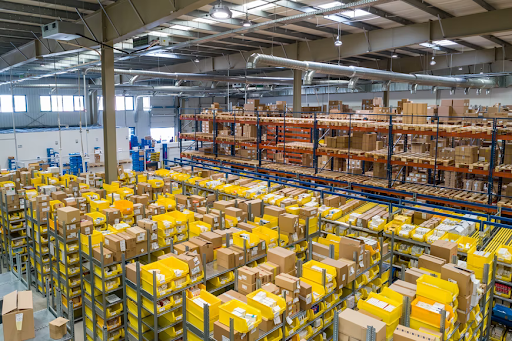
Supply Chain Issues
Computer chips, Paper hygiene products, Cream cheese, Testing kits, these are just a handful of the myriad products that have become increasingly hard to get as the pandemic progresses, no matter the size of your bank account. Covid-19 set a global supply chain disruption in motion, and the unfortunate reality is that there seems to be no end in sight.
What’s more, the recent supply chain issues felt around the world are expected to have lasting effects on the economy, manufacturing and transportation industries, and beyond. In our rapidly changing world, where new Covid variants continue to further disrupt daily life, the relationship between supply and demand is increasingly complex. Competition is fierce among global competitors vying for consumers. Shortages lead to more shortages, including that of workers, and suppliers increasingly can’t keep up with demand.
The labor market is tough right now, and skilled workers (in manufacturing, freight, or another industry altogether) can afford to be choosy. Yet the situation looks a little bit different depending on location. As for the U.S. worker shortage, there’s likely to be approximately 2.1 million unfilled jobs in manufacturing by 2030, a number that could have devastating, long-term repercussions for the supply chain.
Let’s take a look at how we got here, the lasting effects of prolonged supply chain disruption, and why there’s no clear-cut solution.
Shock Waves Across the Supply Chain
To better understand the magnitude of recent supply chain issues, consider the industries affected by the disruption. Everyday consumers likely have no idea just how much effort it takes to get goods from their origin point to the end of the supply chain. The supply chain is interdependent on everything from transportation and logistics to manufacturing, and the process involves countless workers, further complicating matters.
With so many moving parts to consider, supply chain disruption can come from numerous points of origin, including human error. Consider the process of order management: The customer makes a purchase, then a warehouse manager or similar worker verifies the order and prepares it for shipping via a third-party carrier. The accounts department may also be involved in the process, by using order management software to keep track of invoices and payments, as well as process backlogs.
If even one part of this process, isn’t functioning efficiently, it becomes increasingly difficult to ensure that goods reach consumers within the promised timeframe. Customer retention hinges in large part on a company’s reputation and reliability. Even if a product or service is affordable, poor communication and the inability to fulfill and ship orders on time typically result in a loss of trust on the part of the consumer.
Adapting to Industry Changes
Product shortages notwithstanding, the good news for consumers is that product options are essentially limitless in our modern, digital era. Covid-fueled social distancing helped usher in a new era of shopping, wherein an increasing number of people purchase everyday items online, to be delivered to a private residence, or picked up in a brick-and-mortar store. According to Politico, online sales surged to almost 32% in 2020, the first year of the Covid pandemic, spiking between April and June.
Unfortunately, the global surge in online shopping comes with a few side effects of its own, and the manufacturing industry should take note. For starters, the price of consumer goods continues to rise alongside inflation, which may impact the global economy for years to come. Then, there’s the natural world to consider.
Despite its convenience, the modern supply chain is far from sustainable, and lengthy backlogs aren’t helping matters. Nor are the rising fuel costs that came about as a result of the pandemic. A vital part of the supply chain, the transportation industry alone is responsible for 14% of global greenhouse gas emissions, primarily from petroleum-based fuels.
Propelling the Supply Chain into the Future
Yet all is not lost when it comes to environmentalism in manufacturing. Around the world, forward-thinking manufacturers are adapting to sustainability trends in the name of financial savings and customer retention, as well as environmental stewardship. Perhaps sustainable manufacturing offers a way forward, as reducing the impact of climate change is of crucial importance, for consumers and manufacturers alike.
In increasing numbers, consumers are willing to pay more for goods that are produced, packaged, and/or shipped sustainably. In terms of the supply chain, companies can jump on sustainable manufacturing trends and overcome logistical challenges at the same time. By sourcing locally, for example, companies can reduce their carbon footprint and emissions output, while also bypassing backlogs at far-off ports and warehouses.
Sustainable manufacturing may help combat long-term supply chain disruption, but it can’t stand on its own. As the effects of recent supply chain issues are wide-reaching, so are the potential solutions, and the human element must not be overlooked. Addressing the shortage of skilled workers is also key to solving pandemic-related supply chain issues, and may help propel the manufacturing industry into a profitable, healthier future.
